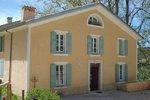
Tour du Roc
From Notre-Dame du Roc, rebuilt in 1703 on the ruins of the church of the 9th century of the ancient city of Petra Castellana, a remarkable panorama on Castellane and the Verdon is offered to the walker.
8 points of interest
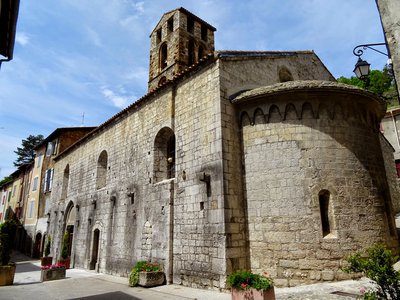
Eglise Saint-Victor - DR  Patrimony and history
Patrimony and historyThe church of Saint-Victor
The church was built on the plot of land belonging to the abbey of Saint-Victor de Marseille. It was built between the 12th century and the 18th century, and it was listed as a historic monument in 1944. The Church of Saint-Victor is late Romanesque, situated at the articulation of Romanesque art and Gothic art. It consists of a nave and a semicircular apse dating from the 13th century on the South side. A bell tower was added in the 15th century (1455), the upper part having been added in the 19th century.
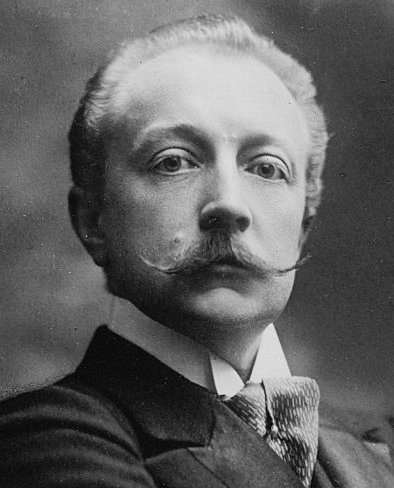
Boni de Castellane - DR  Patrimony and history
Patrimony and historyDandy Boni
The Castellane family is among the most important of the oldest families of Provence. Many representatives of this family bear the first name of Boniface. The most famous of the members of this family, affectionately named Boni (1867-1932), was elected several times MP for the department whose name was Basses-Alpes at that time. His generosity was famous throughout the region. In Paris, where he lived most of his time, his lifestyle was sumptuous and the parties organised by this "dandy” were famed.
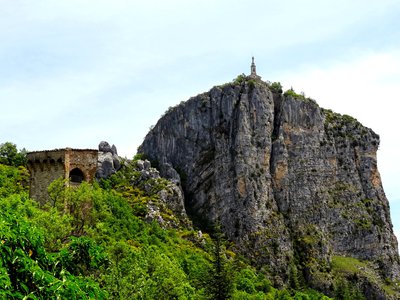
Le Roc de Castellane - DR  Patrimony and history
Patrimony and historyA rock, a peak, a peninsula...
In fact the 200m high rock was inhabited several times in the course of the history of the town. The hilltop sites in this part of Provence essentially correspond to two major periods in search of safe places. The first one, before the Roman colonization in the 1st century BC, corresponds to the Celtic-Ligurian settlement period and the formation of so-called oppida. The second great period corresponds to the Saracen invasions from the 8th century to the early 10th century.
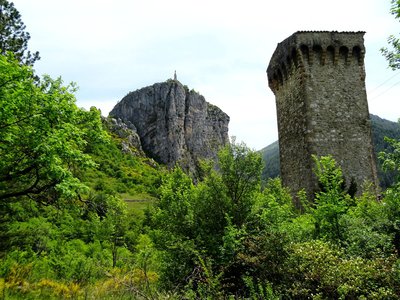
La Tour du Roc - DR  Patrimony and history
Patrimony and historyThe pentagonal tower
Everything is well in the 13th century when the town left Petra Castellana and had just settled in the plain, the country is peaceful and prosperous. This is not the case in the second half of the 14th century when economic crises and social unrest were more and more numerous. Times are no longer safe and the town is fortified in 1359. The wall, lined with 14 square towers, must adapt the shape of the town exactly in the same manner it was at that time. Hence the construction to the upper corner of this high tower that dominates the plain.
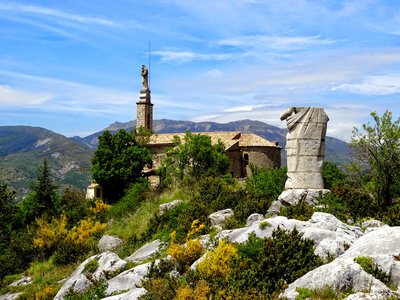
Chapelle Notre-Dame du Roc - DR  Patrimony and history
Patrimony and historyThe chapel of Notre-Dame du Roc
Castellane was placed under the protection of Notre-Dame in the Middle Ages. On the Rock, the first church was built at the same period as the fortress (around the 11th century) and included a defense tower of the castle as an apse. The first mention dates from 1301. The inhabitants of Castellane were constantly concerned: in the 16the century, during the religious wars when it was devastated; in the 18th century, they enlarged it and, in the 19th century, they crowned the great white statue facing the town.

Ruine de Petra Castellana - DR  Patrimony and history
Patrimony and historyPetra Castellana
At the top of the rock, a fortified castle was built around the half of the 10th century. The name of Castellane is derived from this so-called period of "encastellement": Petra Castellana means the "fortified rock." From that time of the second occupation, almost nothing has remained. The town walls are still visible and were probably rebuilt several times. The church, confirmed from the 11th century, was rebuilt several times until 1876, when the statue of the Virgin was placed in the church.
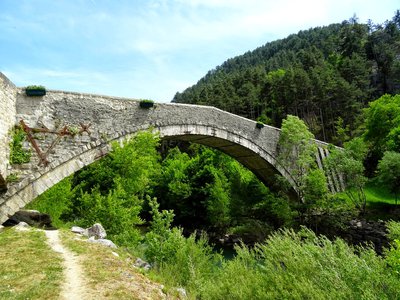
Le Pont du Roc - DR  Patrimony and history
Patrimony and historyRoc Bridge
The bridge is located on an ancient road, Via Vintinia, that connected Vence to Digne. A ford or a bridge allowed to go across the Verdon. Historians refer to a bridge built over the river in 1052. In 1300, a new bridge was built, and was destroyed less than a century later by the Vicomte de Turenne who devastated the region. The bridge you can see today, one of the oldest bridges remaining in Provence (1407), was built by the community of Castellane in the beginning of the 15th century.
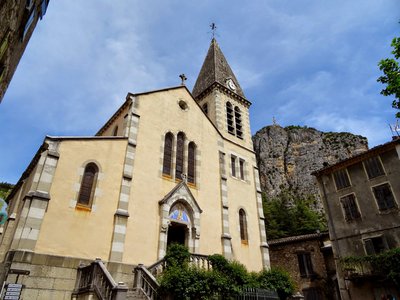
Le Sacré Coeur - DR  Patrimony and history
Patrimony and historyThe parish church of the Sacré Coeur
The Church of the Sacré Coeur dates from the mid-19th century. It was built between 1869 and 1873. It then became the parish church of Castellane. The construction of the new church took place under the leadership of Father Pougnet, a priest and an architect. This priest officiated in Western Africa for several years in the course of the 19th century. Thus, the Church of the Sacré Coeur presents the characteristic of being built like churches in Western Africa.
Description
From themain square go up the N4085 in the direction of Digne-les-Bains, past the tourist office, follow the national road going up the sidewalk. Pass in front of the St-Michel car park and, in front of a gas station, take on the right the ascending path to the chapel Notre-Dame du Roc. Follow the route along the ramparts and continue along a path (calade). Continue along the ramparts and pass at the foot of the pentagonal tower, climb the trail on a path of the cross staked with fourteen oratories. Continue the ascent to the crossroad between the access to the chapel and the tour du Roc.
1- Go up to the chapel Notre-Dame du Roc, overlooking the village located 180m below. Return by the same route to point 1. Follow the road to the left then, in 10m, take a right at the "Tour du Roc", a way back on Castellane. Cross the ruins, shortly after passing the old water catchment of a spring, the path winds, joining down a ravine. Descend this one to a dwelling access road, then a small road along the Verdon.
2- Take a right and after passing under the rock and in front of the bridge, reach the Boudousque parking lot. To join the center of the village and the place of the church by the street of the Lieutenant Blondeau, then the square.
- Departure : From the main square
- Arrival : On the main square
- Towns crossed : Castellane
Forecast
Altimetric profile
Recommandations
Avoid the strong summer heat, leave early. We recommend: 2 L of water per person, a hat and proper walking shoes.
Information desks
House of the Verdon Regional Nature Park
Domaine de Valx, 04360 Moustiers-Sainte-Marie
House of the Verdon Regional Nature Park
OTI Verdon Tourisme
Rue nationale, 04120 Castellane
Transport
« Limitons les déplacements en voiture, pensons aux transports en commun ! Prenez la ligne régionale BV1bis entre Riez et Castellane du 1er Juillet au 11 octobre. Depuis Riez, départ 8h35, retour 16h00. Depuis Castellane, départ à 7h30, retour 16h20 et 19h30. Retrouvez tous les horaires sur https://zou.maregionsud.fr/ ».
Access and parking
53km south east of Digne via the N850 and the D4085
Parking :
Report a problem or an error
If you have found an error on this page or if you have noticed any problems during your hike, please report them to us here:

